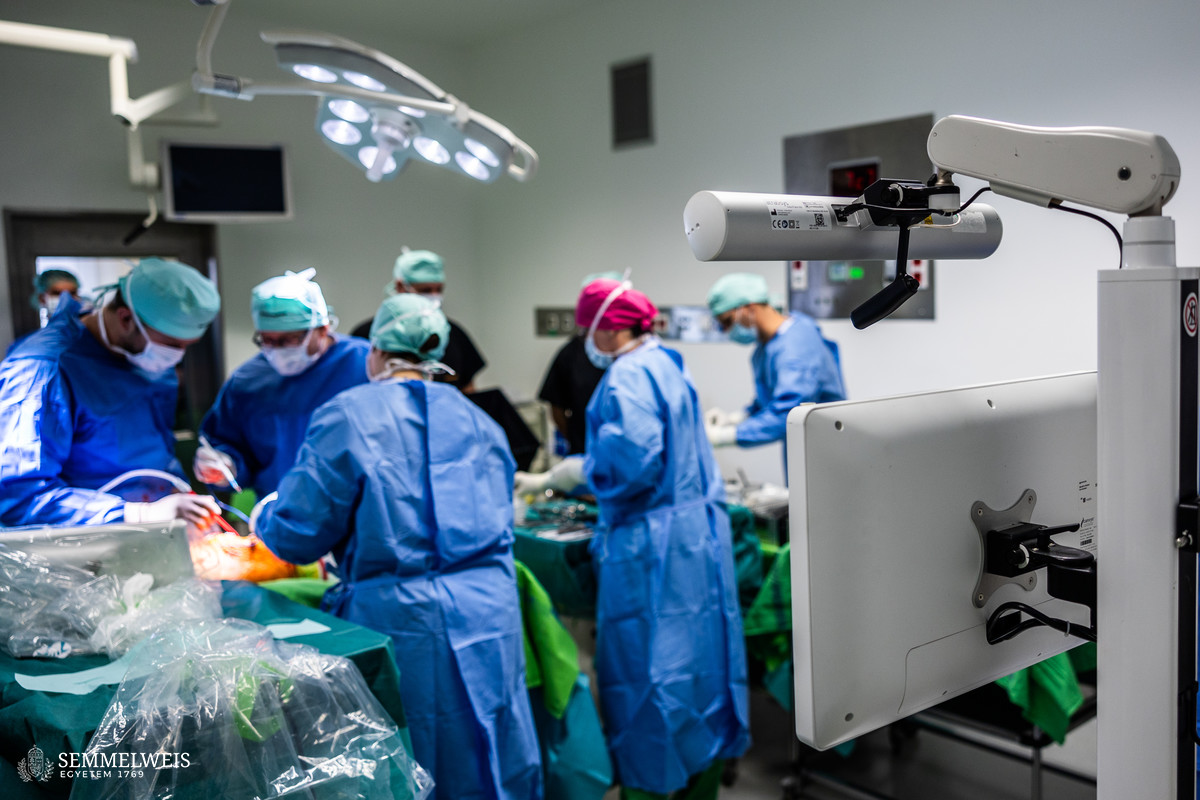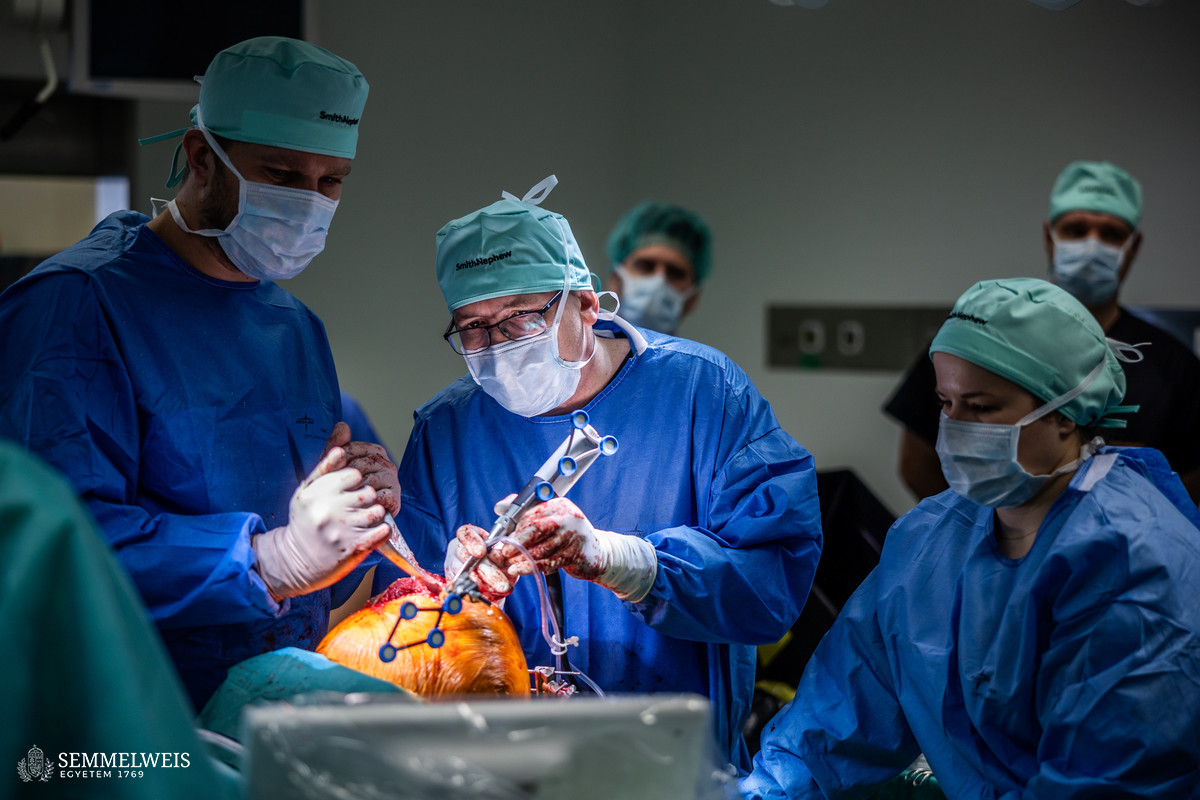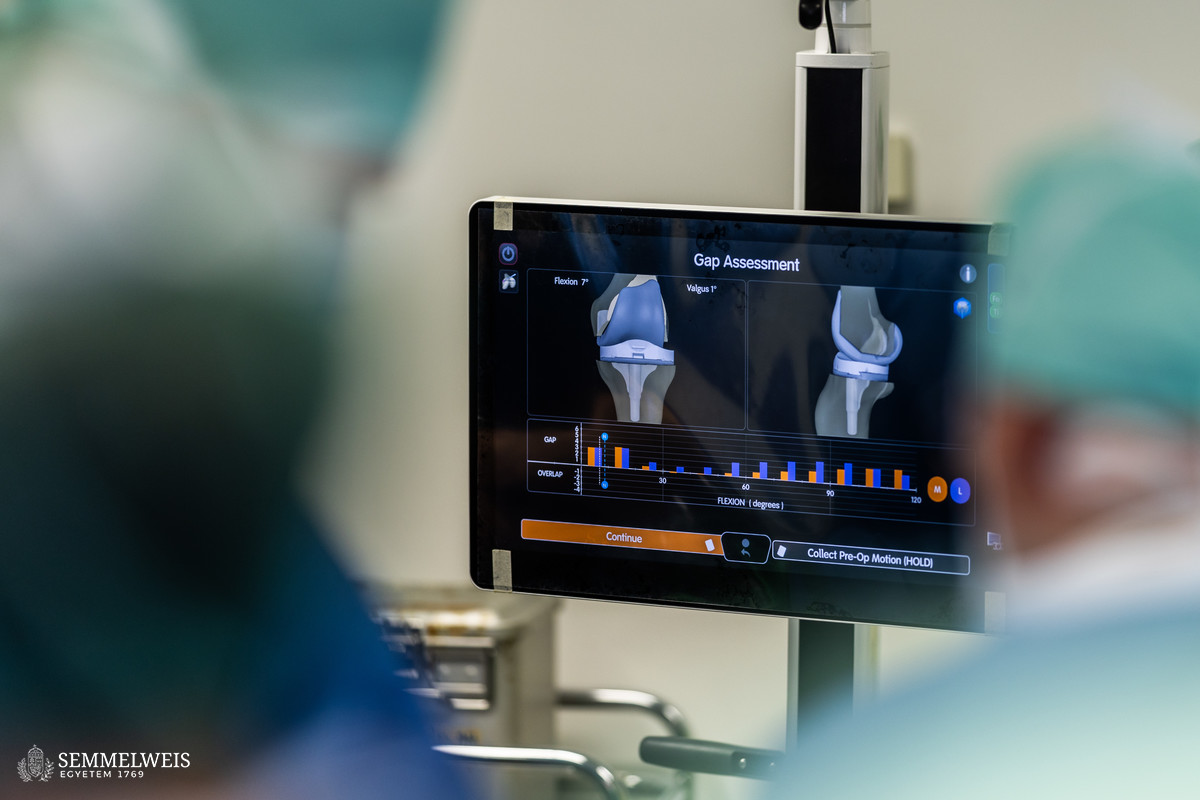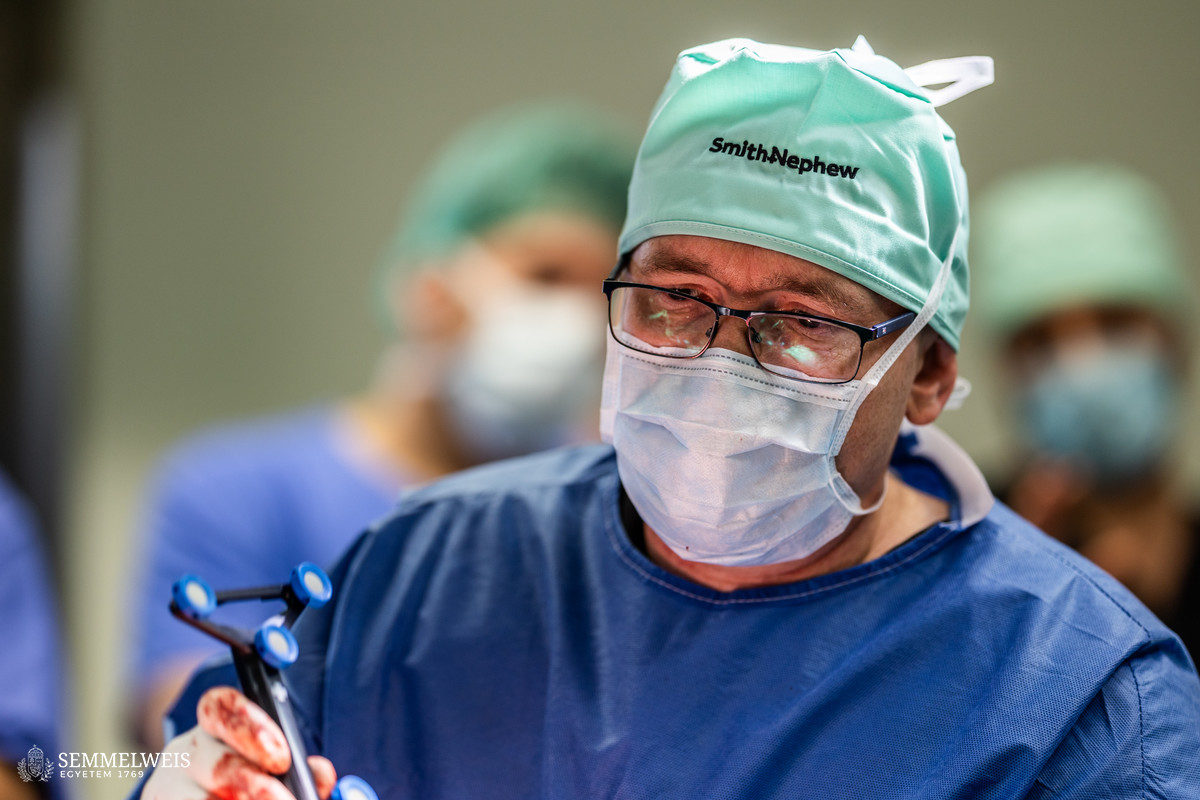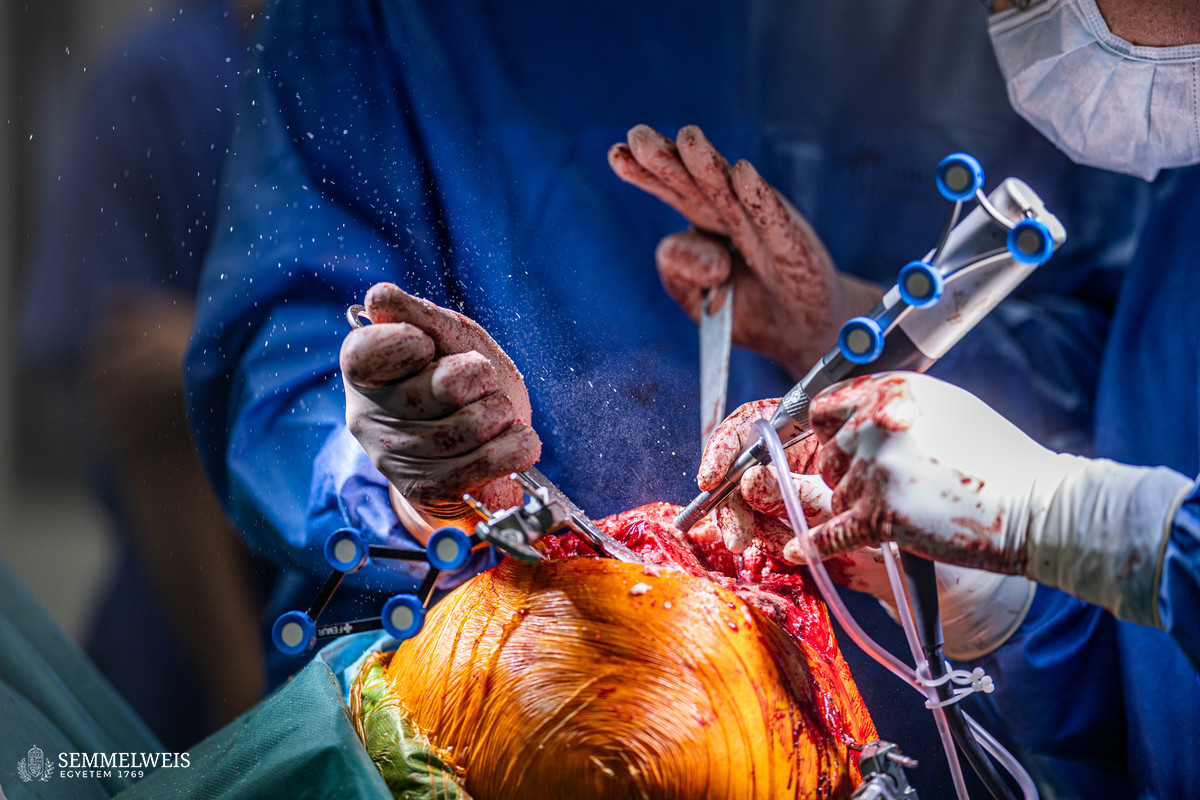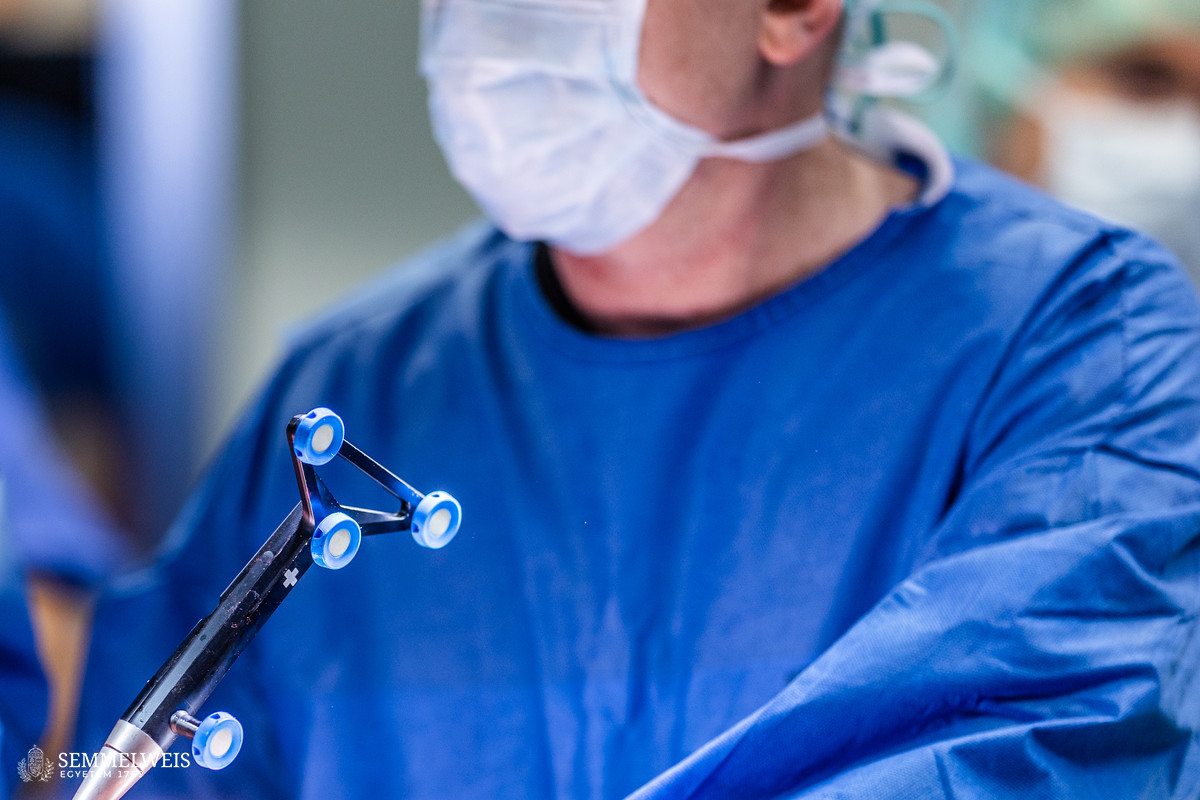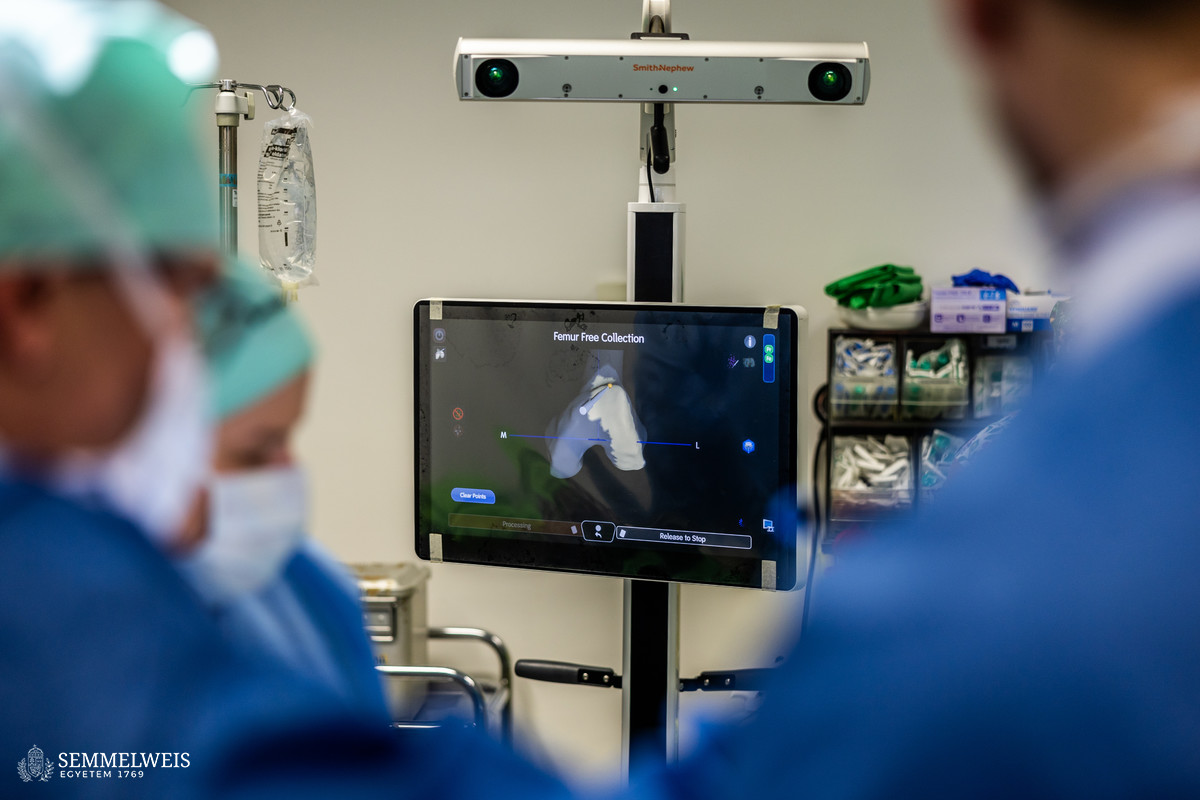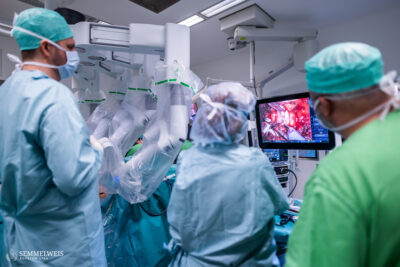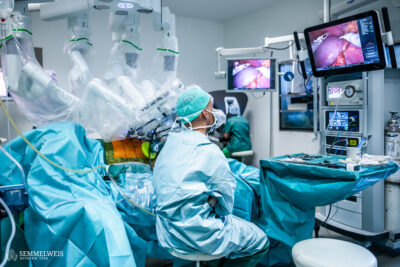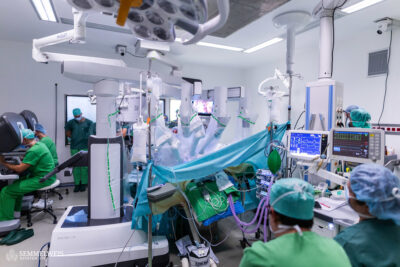Dr. Zoltán Bejek, Associate Professor at the Department of Orthopedics, presenting the latest technology for knee replacement surgery, said that the CORI designed by Smith & Nephew is a new generation of musculoskeletal robot that has the great advantage of being significantly lighter and smaller, thus it can be moved between operating theatres. The robot uses a computerized navigation system that has been in operation for more than two decades in Hungary: in 2002, the Department of Orthopedics was the first in the country to receive such a machine. The new generation of musculoskeletal robot differs from the da Vinci in that the surgeon does not control the device from a console, but it is the handheld robotics itself which performs the intervention planned by the surgeon.
 Dr. Zoltán Bejek pointed out that the robots were first developed for the knee since it is one of the most delicate joints in terms of the precision of the intervention. Therefore, this is the area where robot-assisted intervention is most justified. In addition to the knee, hip operations can now be performed robotically, but the scope of surgery will soon be extended to the shoulder, ankle and elbow. He stressed that in manual orthopedic surgery, including knee implants, around 20 percent of patients can experience complaints of various intensity ─ even a deviation of 2-3 millimeters can cause a lifetime of complaints ─ and that the robot’s precision significantly improves this rate, reducing the deviation to half a millimeter. In addition, the operations performed in this way take less time, so the patients experience less strain in this respect as well. A further advantage of robot-assisted technology is that it can be used to treat patients with a special anatomy.
Dr. Zoltán Bejek pointed out that the robots were first developed for the knee since it is one of the most delicate joints in terms of the precision of the intervention. Therefore, this is the area where robot-assisted intervention is most justified. In addition to the knee, hip operations can now be performed robotically, but the scope of surgery will soon be extended to the shoulder, ankle and elbow. He stressed that in manual orthopedic surgery, including knee implants, around 20 percent of patients can experience complaints of various intensity ─ even a deviation of 2-3 millimeters can cause a lifetime of complaints ─ and that the robot’s precision significantly improves this rate, reducing the deviation to half a millimeter. In addition, the operations performed in this way take less time, so the patients experience less strain in this respect as well. A further advantage of robot-assisted technology is that it can be used to treat patients with a special anatomy.
In addition to medicine, the device provides considerable support in education, allowing residents to practice planning without a patient, and it can also be used in research as robot operators are automatically connected to an international medical network, the members of which constantly exchange ideas on the application. The machine collects technical data on surgeries, so it is constantly evolving.
The first robot-assisted knee surgery financed by social insurance was performed by Dr. Zoltán Bejek at the Department of Orthopedics under the supervision of Polish specialist Dr. Krzysztof Modzelewski. The CORI musculoskeletal robot is available at Semmelweis University for two weeks by courtesy of the manufacturer, during which time six knee operations are to be performed, but the university aims to acquire its own robot, thus covering the entire range of robotic surgery, Dr. Zoltán Bejek emphasized.
 A robotics open day linked to the event showcased the robot-assisted areas already successfully used at the university. In his welcome speech, Dr. György Szőke, Director of the Department of Orthopedics, stressed that the gap that still exists in robotic surgery was to be filled with the new device, and that the application of robotics in musculoskeletal surgery would enable the department to be integrated into the university’s robotics system, which could eventually create a training center unique in the region.
A robotics open day linked to the event showcased the robot-assisted areas already successfully used at the university. In his welcome speech, Dr. György Szőke, Director of the Department of Orthopedics, stressed that the gap that still exists in robotic surgery was to be filled with the new device, and that the application of robotics in musculoskeletal surgery would enable the department to be integrated into the university’s robotics system, which could eventually create a training center unique in the region.
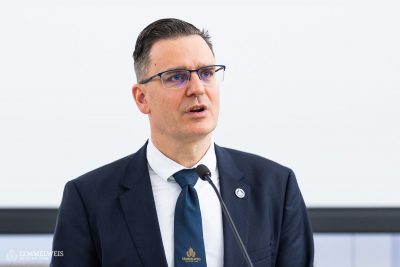 In his talk entitled “The present of robotics in surgery,” Dr. Attila Szijártó, Director of STéG, reviewed the major milestones in surgery and the primary reasons for the use of robots. He drew attention to the new opportunities offered by 5G in remote surgery, and then briefly outlined the development of the da Vinci robotic surgical device, highlighting that the fourth-generation da Vinci Xi robot, which represents the most advanced technology, has been in operation at STéG since June 2022.
In his talk entitled “The present of robotics in surgery,” Dr. Attila Szijártó, Director of STéG, reviewed the major milestones in surgery and the primary reasons for the use of robots. He drew attention to the new opportunities offered by 5G in remote surgery, and then briefly outlined the development of the da Vinci robotic surgical device, highlighting that the fourth-generation da Vinci Xi robot, which represents the most advanced technology, has been in operation at STéG since June 2022.
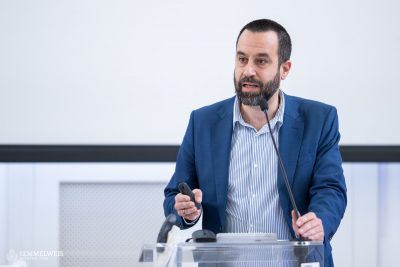 Associate Professor Dr. Ákos Szücs, Deputy Director of STéG, outlined how and along which main guidelines the application of robots in the surgical discipline started. He also spoke about the clear advantage of robots in regions that are difficult to access, such as the posterior part of the liver in abdominal surgery, thoracic surgery, but also the esophagus. He emphasized that in the pancreas, liver and colon, the da Vinci robot is used exclusively for surgery on malignant tumors. The speaker pointed out that, since in Hungary these robot-assisted operations are typically performed by specialists already experienced in open abdominal surgery and laparoscopy, the learning curve is much shorter than in other countries.
Associate Professor Dr. Ákos Szücs, Deputy Director of STéG, outlined how and along which main guidelines the application of robots in the surgical discipline started. He also spoke about the clear advantage of robots in regions that are difficult to access, such as the posterior part of the liver in abdominal surgery, thoracic surgery, but also the esophagus. He emphasized that in the pancreas, liver and colon, the da Vinci robot is used exclusively for surgery on malignant tumors. The speaker pointed out that, since in Hungary these robot-assisted operations are typically performed by specialists already experienced in open abdominal surgery and laparoscopy, the learning curve is much shorter than in other countries.
 At the university, the da Vinci surgical system is used in the field of urology exclusively for oncology patients, Dr. Péter Nyirády noted in his talk. The Director of the Department of Urology explained that radical prostatectomy and renal tumor resection are the two areas where the highest precision to the millimeter is required, thus the robot’s advantages are maximized from the patient’s point of view. Dr. Péter Nyirády stressed that the robot can be used to train a surgeon to the highest standards in a significantly shorter time than in the case of traditional methods (laparoscopy, open surgery), where gaining considerable experience takes much longer. In operations with da Vinci, the operating time achieved with 550 open operations was reached after only the 50th operation.
At the university, the da Vinci surgical system is used in the field of urology exclusively for oncology patients, Dr. Péter Nyirády noted in his talk. The Director of the Department of Urology explained that radical prostatectomy and renal tumor resection are the two areas where the highest precision to the millimeter is required, thus the robot’s advantages are maximized from the patient’s point of view. Dr. Péter Nyirády stressed that the robot can be used to train a surgeon to the highest standards in a significantly shorter time than in the case of traditional methods (laparoscopy, open surgery), where gaining considerable experience takes much longer. In operations with da Vinci, the operating time achieved with 550 open operations was reached after only the 50th operation.
 Dr. István Szabó, Associate Professor at the Department of Obstetrics and Gynecology, presented the gynecological aspects of robot-assisted surgery. He said that 234 such operations had already been performed at the department, including vaginal construction, myomectomy, removal of a very large uterus, endometriosis surgery and the removal of endometrial carcinoma, a malignant tumor of the endometrium. He emphasized that the robotic technology should be used in the most severe cases of endometriosis, in which the bowel, urinary tract and hard-to-reach anatomical areas are affected. “Da Vinci robotic technology can also be used on patients who for some reason would be excluded from laparoscopic surgery, and the intervention can be performed more precisely even in difficult cases,” Dr. István Szabó said, highlighting the benefits of the technology.
Dr. István Szabó, Associate Professor at the Department of Obstetrics and Gynecology, presented the gynecological aspects of robot-assisted surgery. He said that 234 such operations had already been performed at the department, including vaginal construction, myomectomy, removal of a very large uterus, endometriosis surgery and the removal of endometrial carcinoma, a malignant tumor of the endometrium. He emphasized that the robotic technology should be used in the most severe cases of endometriosis, in which the bowel, urinary tract and hard-to-reach anatomical areas are affected. “Da Vinci robotic technology can also be used on patients who for some reason would be excluded from laparoscopic surgery, and the intervention can be performed more precisely even in difficult cases,” Dr. István Szabó said, highlighting the benefits of the technology.
The open day included a workshop, in which participants had the opportunity to try out 3D knee and hip design at various workstations and test the CORI robot used in orthopedic surgery.
Bernadett Bódi
Translation: Dr. Balázs Csizmadia
Photo: Bálint Barta – Semmelweis University

